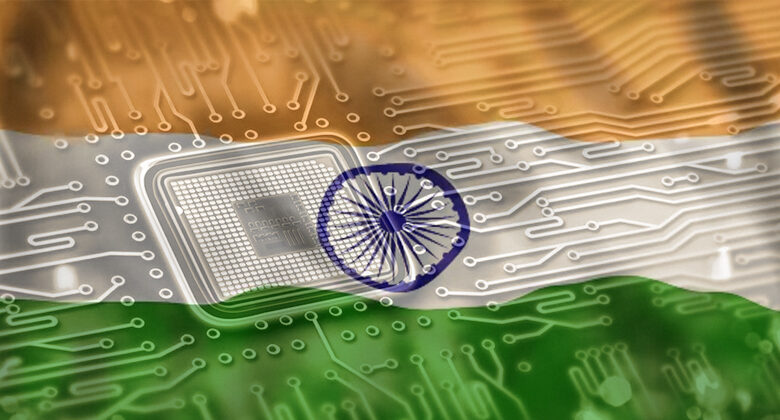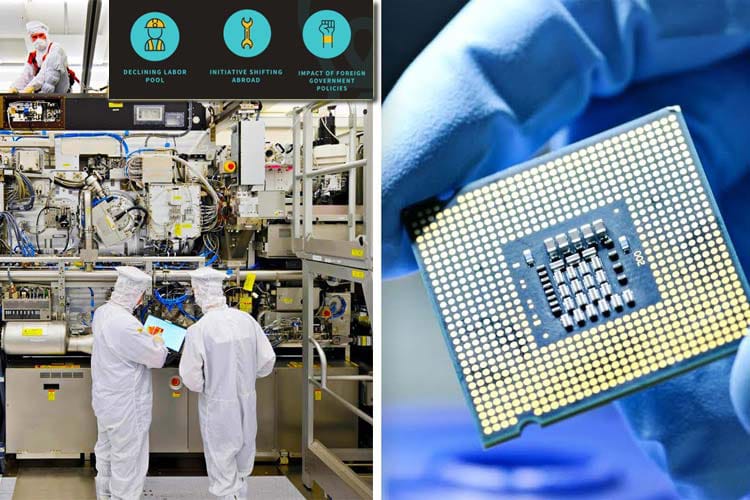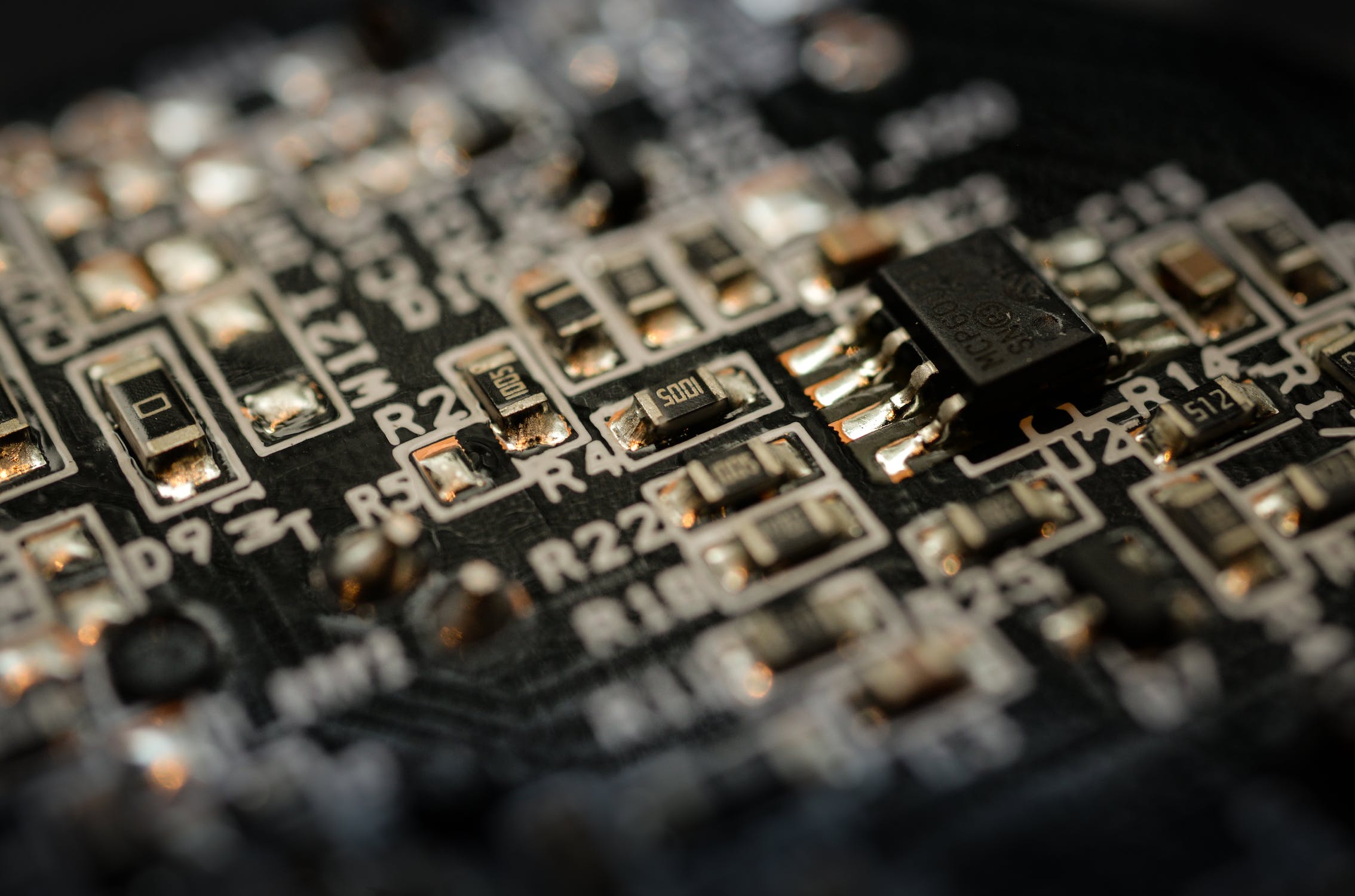India’s Data Transfer Stance At WTO Rattles Semiconductor Giants; Has India Managed To Lay A Solid Foundation For India’s Semiconductor Manufacturing?
India's ambition to establish itself as a semiconductor manufacturing hub has gained momentum with recent government initiatives, yet challenges persist in attracting major players and competing globally. Despite significant investments and policy reforms, India's semiconductor industry faces hurdles in infrastructure, talent pool development, and global competitiveness. To make matters more challenging, India's forthcoming advocacy for tariffs on cross-border digital commerce and data transfers has set off alarm bells among global semiconductor industry leaders. As ministers from around the world prepare to convene at a World Trade Organization meeting in Abu Dhabi, tensions rise over the extension of a long-standing moratorium on duties for electronic transmissions. This stance by India, opposed by major chip-producing nations, threatens to disrupt the semiconductor supply chain and stifle its own chip design industry.

Chip giants are alarmed by India’s position on data transfers as it prepares to advocate for tariffs on cross-border digital e-commerce and data exchanges at an upcoming global trade summit; the move, they argue, could hinder India’s own chip design industry.
Ministers from various countries will gather for a World Trade Organization meeting in Abu Dhabi soon, aiming to address several trade issues, including the extension of a moratorium on duties for electronic transmissions in place since 1998.
Nations like India, South Africa, and Indonesia are said to challenge efforts by the U.S. and Europe to prolong the moratorium, risking its expiration this year.
The potential collapse of the moratorium threatens to impose tariffs on digital commerce and countless transfers of chip design data across borders, deepening costs and aggravating chip shortages, as highlighted in a letter from the World Semiconductor Council (WSC) to Indian Prime Minister Narendra Modi.
India views the chips sector as key for economic growth, evident in Modi’s initiative with a $10 billion incentive package to bolster the industry.
However, implementing duties on data transfers could hinder India’s semiconductor progress and deter investment, particularly considering over 20% of the global semiconductor design workforce resides in India, according to the WSC’s letter.
The WSC, comprising chip industry associations from the U.S. and China, representing major players like Qualcomm, Intel, AMD, and Nvidia, stress the importance of digital services being subject to duties, citing the potential revenue loss for developing nations due to increased imports from developed countries.
In their letter, the WSC calls on India to collaborate towards a WTO agreement permanently prohibiting customs duties and procedures on cross-border data and digital tools.
They argue that renewing support for the moratorium would signal India’s attractiveness to semiconductor companies as an investment-friendly destination.

Has India Laid a Solid Foundation for Semiconductor Manufacturing?
India’s aspiration to establish itself as a semiconductor hub is not new, yet past efforts have been fraught with failures spanning over six decades.
However, optimism surged with the government’s announcement in December 2021 of a production-linked incentive scheme valued at Rs 76,000 crore for chip and display fabrication units.
Following Prime Minister Narendra Modi’s visit to the US in June 2023, during which semiconductor giant Micron unveiled plans to invest in India, he inaugurated the second annual Semicon India summit in Gandhinagar, Gujarat.
The anticipation grew, especially after Micron’s commitment to establish an ATMP (assembly, testing, marking, and packaging) unit, and AMD’s pledge of a $400 million investment to build its largest design center in Bengaluru.
However, India is yet to attract applications from major chip players to establish semiconductor fabrication units. While reports suggest Tower Semiconductor’s filing of a fresh application, confirmation from the government is pending.
Acknowledging the challenges ahead, Rajeev Chandrasekhar, Minister of State for the Ministry of Electronics and Information Technology (MeitY), stated the long-term perspective required for semiconductor manufacturing, emphasizing its multi-decade trajectory.
![]()
The Challenges
Countries worldwide are seizing the opportunity to localize chip production, from established players like the US, Europe, and Japan to emerging economies like Malaysia.
Thus, it presents a significant hurdle for India, given the substantial investment required to establish a foundry—ranging from $2 billion to $20 billion—along with a prolonged period of six to eight years to achieve profitability.
Additionally, factors such as infrastructure, skilled workforce availability, proximity to clients and markets, shipping logistics, and geopolitical stability play crucial roles in location selection. India’s fledgling chip ecosystem still has ground to cover to meet these criteria.
While the government initiated a fresh approach in December 2021, it grapples with the weight of past setbacks.
India not only trails behind developed nations but also lags behind some developing countries in attracting semiconductor investments.
For instance, Intel opted to construct its largest 3D chip packaging facility in Malaysia, underscoring the uphill battle India faces in this competitive landscape.
Overcoming Obstacles, India’s Semiconductor Journey
India’s semiconductor ambitions have long been hampered by decades of missed opportunities, leading to skepticism about its capabilities.
Independent analyst Arun Mampazhy has stated the need for India to shed its past failures and establish itself as a credible player in the semiconductor industry.
Despite optimism surrounding the establishment of Micron’s ATMP plant, experts and officials from the Ministry of Electronics and Information Technology (MeitY) acknowledge the challenges ahead.
While ATMP operations represent progress, true success hinges on developing capabilities in design, development, and fabrication—the foundational pillars of semiconductor manufacturing.

The Question Of Skilled Labour
A critical obstacle hindering India’s progress is the scarcity of skilled talent.
The shortage of qualified workers is a global concern, but India’s semiconductor industry particularly struggles in this regard. Danish Faruqui of Fab Economics accentuates feedback from industry players citing talent scarcity as a significant barrier to investment, putting the nation’s semiconductor investments at risk.
Recognizing the urgency, initiatives like introducing specialized courses by the All India Council for Technical Education (AICTE) aim to address the talent gap.
However, achieving the target of creating a skilled workforce of over 85,000 by 2027 remains a formidable challenge.
Another hurdle lies in securing technology partnerships for semiconductor foundries.
The Indian government now requires projects to have manufacturing-grade technology (MGT) partners, significantly limiting options. With only a handful of companies possessing MGT worldwide, including Intel, Samsung Electronics, and Micron, finding suitable partners proves arduous.
Similarly, the complex process of technology transfer adds to the challenge. Existing MGT companies are reluctant to engage in lengthy transfers with entities lacking adequate capabilities, heightening India’s struggle to secure partnerships and advance its semiconductor industry.

Greenfield Establishment
Amidst the backdrop of the Covid-19 pandemic and the acute global chip shortage, major countries recognized semiconductor technology and manufacturing as critical strategic and economic assets.
Various nations, including the US with its CHIPS Act, introduced schemes to attract semiconductor firms. However, due to their pre-existing ecosystems, large projects with advanced technologies predominantly gravitated towards developed countries.
The Indian government is mindful of this reality.
According to Chandrasekhar, the US CHIPS Act aimed at incentivizing the expansion of their mature semiconductor ecosystem, which has been in operation for decades.
Nevertheless, numerous other factors contribute to the attractiveness of semiconductor investment destinations. Despite offering incentives, industry experts highlight the significantly higher infrastructure and operational costs associated with establishing semiconductor fabs in India compared to locations like China and Taiwan.
Sanjay Gupta, Chairman of the India Electronic and Semiconductor Association (IESA), elaborates on the challenges stemming from India’s underdeveloped electronic components and semiconductor manufacturing ecosystem, resulting in reliance on imports for essential raw materials, equipment, and tools.
Additionally, factors such as high costs of power, water, transportation, land acquisition, and environmental clearance further impede project implementation and increase capital expenditure.
Political stability and the longevity of policies also emerge as crucial concerns, as noted by industry veteran Satya Gupta. He stresses the necessity for clear assurances from political, bureaucratic, and technical leadership to ensure the stability and continuity of policies, irrespective of political changes.
Another significant hurdle is the scarcity of raw materials, particularly electronic components, heavily dependent on imports. Sanjeev Keskar,
Executive Director at EPIC and former president of IESA, emphasizes the challenges posed by import dependence on raw materials, which escalate transport costs, inventory management, and logistical complexities.
Moreover, countries like the US, Europe, and Japan benefit from a robust presence of fabless and electronics product companies, simplifying the expansion of chip manufacturers’ operations and the establishment of new fabs.
![]()
The Chances
In navigating these challenges, Satya Gupta identifies two potential avenues for advancing India’s Semiconductor Mission – established global companies such as Micron and Intel, and domestic conglomerates like Reliance Industries and Tata Group, with their substantial resources, global reach, and focus on digital technologies.
India finds optimism in its growing electronics manufacturing ecosystem and its success in attracting prominent players like Apple, Samsung, HP, Dell, and Lenovo to establish assembly lines within the country.
Inspired by this progress, India has been actively engaging with semiconductor majors, with top leadership including PM Modi and Ministers from MeitY participating in consultations to update stakeholders on policy developments and address infrastructural gaps over the past two years.
The Last Bit, India’s aspiration to emerge as a prominent player in semiconductor manufacturing hinges on many challenges, ranging from infrastructure limitations and high operational costs to concerns regarding political stability and technology partnerships.
Despite government initiatives and efforts to attract investment, the country faces the task of overcoming its historical setbacks and establishing a competitive semiconductor ecosystem.
Moving forward, clear assurances regarding policy stability and continuity, coupled with strategic collaborations with global industry leaders, are necessary to manage the complexities of semiconductor manufacturing and position India as a viable destination for semiconductor investments.
With concerted efforts and sustained commitment, India holds the potential to overcome obstacles and carve out a significant presence in the global semiconductor market.
However, with its current stance, India’s forthcoming advocacy for tariffs on cross-border digital commerce and data transfers may not be an ideal step in making India a global leader in the semiconductor industry.




